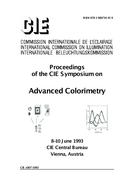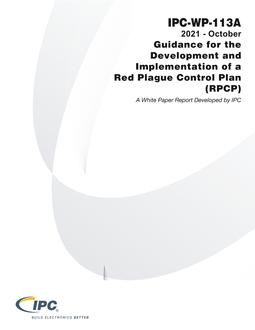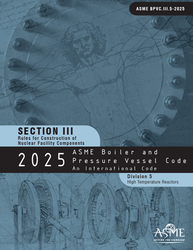
CIE x027
Original price was: $127.20.$76.00Current price is: $76.00.
Proceedings of the CIE Symposium '93 on advanced colorimetry
| Published by | Publication Date | Number of Pages |
| CIE | 01/01/1993 | 117 |
CIE x027 – Proceedings of the CIE Symposium '93 on advanced colorimetry
At the meeting of CIE Division 1, Vision and Colour, at Princeton, USA, in 1992, some visual colorimetric results were presented that gave the impression of major discrepancies of the system. At the same time the US Intersociety Colour Council formed a Project Committee to investigate possible updates of the present system of colorimetry.
The CIE decided to investigate the questions in more details and charged its Central Bureau to organize an expert meeting to clarify possible errors and give guidance for further improvements.
The meeting took place at the Central Bureau of the CIE between 8 – 10 June 1993. 25 experts in colour vision, colour models and applied colorimetry accepted the invitation of the Central Bureau and took part in the discussions. 18 papers were read, summarizing the development of the CIE 1931 and 1964 colorimetric systems, our vision knowledge on which these systems are based, limitations in using the 1931 and 1964 Colorimetric Observers, and analyzing causes of discrepancies and ways of clarification.
Alan Robertson gave an overview of 60 years of CIE colorimetry, and summarized the experiments that led to the 1931 and 1964 Standard Observers.
Roy Berns analyzed the mathematical assumptions on which CIE colorimetry is based, presenting a concise and coherent picture of basic colorimetry. Then Bill Thornton dealt with his experiments showing alarming discrepancies between observed and calculated colour matches (described in detail in his 3-part paper in Color Res. Appl. in 1992). Hana Kvrvsi presented results of experiments she and her coauthors performed in repeating Thornton’s experiments, where she found similar discrepancies and was able to give one further evidence to observations: most of her 32 observers were young people but made similar matches as Thornton’s observers.
Michael Brill theorized on a covering theory that could incorporate additivity failures. Lucien Morren enlightened the CIE colorimetric system from another side, showing how one can get the x bar ( lambda ) , ~ y bar ( lambda ) , ~ z bar ( lambda )> colour matching functions from the experimental r, g, b colour matches.
In a series of papers Peter Walraven, Joel Pokorny and Vivianne Smith dealt with the findings of visual science that can – at least partly – explain the discrepancies observed between some actual visual colour matches and their calculated CIE values: CIE TC 1-36 is active in developing a chromaticity diagram with physiologically significant axes and one can expect in the not too distant future an alternate 2 deg Observer, where not only the obvious errors of the V(lambda)- curve are corrected, but which reflects our present day knowledge of colour vision. This new system is not expected to supersede the 1931 Colorimetric Observer, but it will be available for vision research and the checking of discrepancies between visual observations and standard colorimetry on a trial basis. Inter- and intra-observer variability was pointed out as one of the causes leading to large differences between actual matches performed by one observer and the calculated results using the average Standard Observer.
Another major factor is rod-intrusion that upsets the match if large matching fields are used (as e.g. a 10 deg field) and the stimuli are not too intense, as was the case in Thornton’s experiments, but also in the experiments leading to the CIE 1964 Standard Observer. In case of the Standard Observer elaboration Judd calculated the effect of the rod-intrusion, and the steps taken by him are reproduced in the Annex of the Proceedings of this Symposium.
Pat Trezona and Hirohiso Yaguchi expanded further on issues of rod-intrusion and Maxwell match versus maximum saturation match method in determining colour matching functions.
A further block of papers by Robert Hunt and Klaus Richter dealt with perceptual attributes of colour.
Lively discussions on the properties and possible extensions of the CIE Colorimetric System and on the validity of Grassmann’s laws led up to the formulation of some requests to CIE Division 1 “Vision and Colour”:
• The derivation of the 1964 colour matching functions required some very specific and subtle operations and conditions so that Grassman’s laws would remain valid. These operations and conditions include an adjustment for rod intrusion at long wavelengths and the use of high luminance levels at middle and short wavelengths to prohibit rod intrusion. The use of the 1964 colorimetric observer functions to predict the results of visual matching experiments conducted under observing conditions in which the retinal illuminance of the stimulus is less than 1000 photopic trolands may not be appropriate and users of CIE 15.2 should be so warned. In addition, there are times when such visual observations are unavoidable and a set of procedures should be outlined for taking into account the appropriate amount of rod intrusion.
• Recent data has indicated that the magnitude of the range of inter-observer variance documented in CIE 80-1989, may be too small for 100 field matches and very much too small for 2 deg field matches. We recommend that Publication 80 be reviewed and the magnitude of the Standard Deviate Observer values be reformulated and a revision of Publication CIE 80 be issued to provide a more realistic estimate of the range of observer differences.
• Currently, TC 1-36 is close to completing its work on fundamental 2 deg color matching functions. We should like to recommend that a reporter be assigned the task of taking the results of this committee and the newly recommended VM(lambda) function to form a test colorimetric observer with luminance weighting in similar manner to the current 1931 standard colorimetric observer. This report would be submitted for field trial for applications where the current 1931 colorimetric observer has been known to fail, such as in the evaluation of whites and narrow spectral lights such as LEDs.
CIE Division 1 followed the requests from the symposium participants, TC 1-36 will publish data for an alternate 20 Observer for trial, a Technical Committee was set up to deal with the effects rod intrusion has in metameric colour matches.
The Proceedings contain 122 pages.
Product Details
- Published:
- 01/01/1993
- ISBN(s):
- 9783900734459
- Number of Pages:
- 117
- File Size:
- 1 file , 51 MB
- Note:
- This product is unavailable in Ukraine, Russia, Belarus




